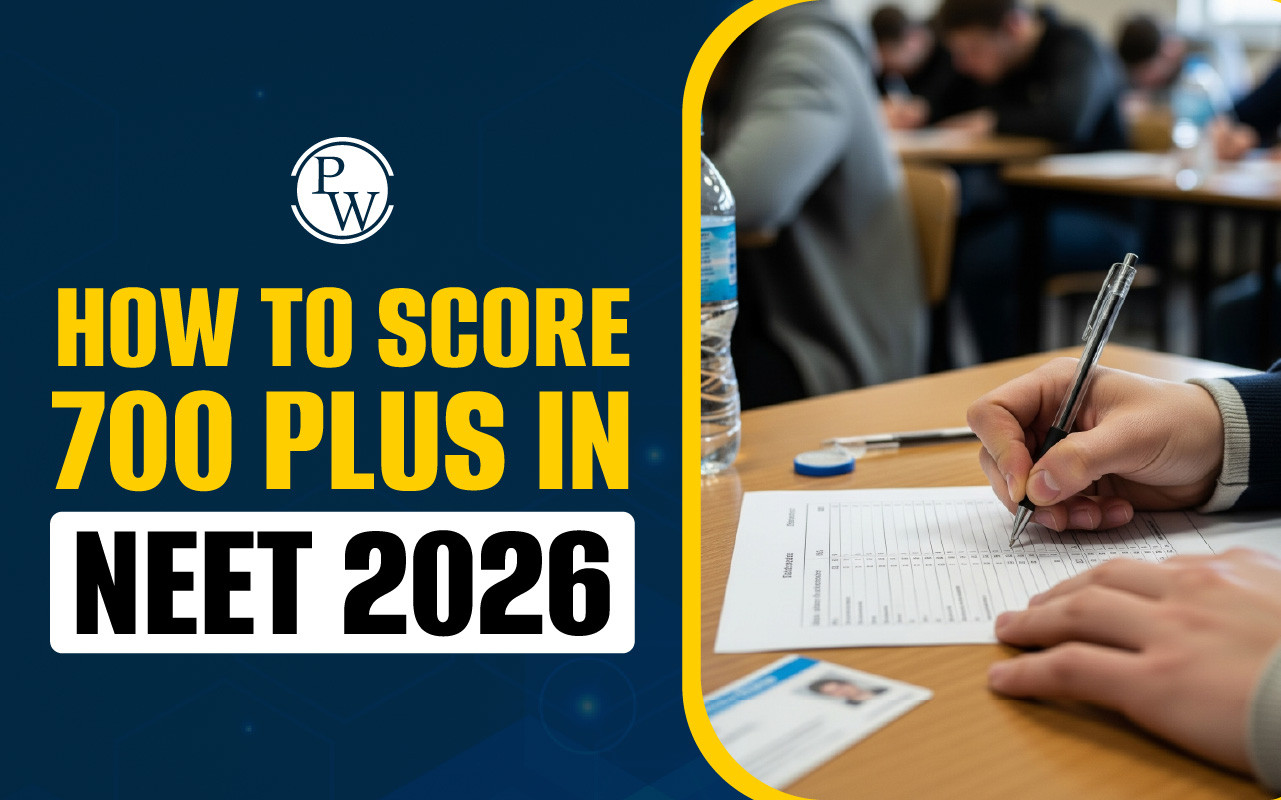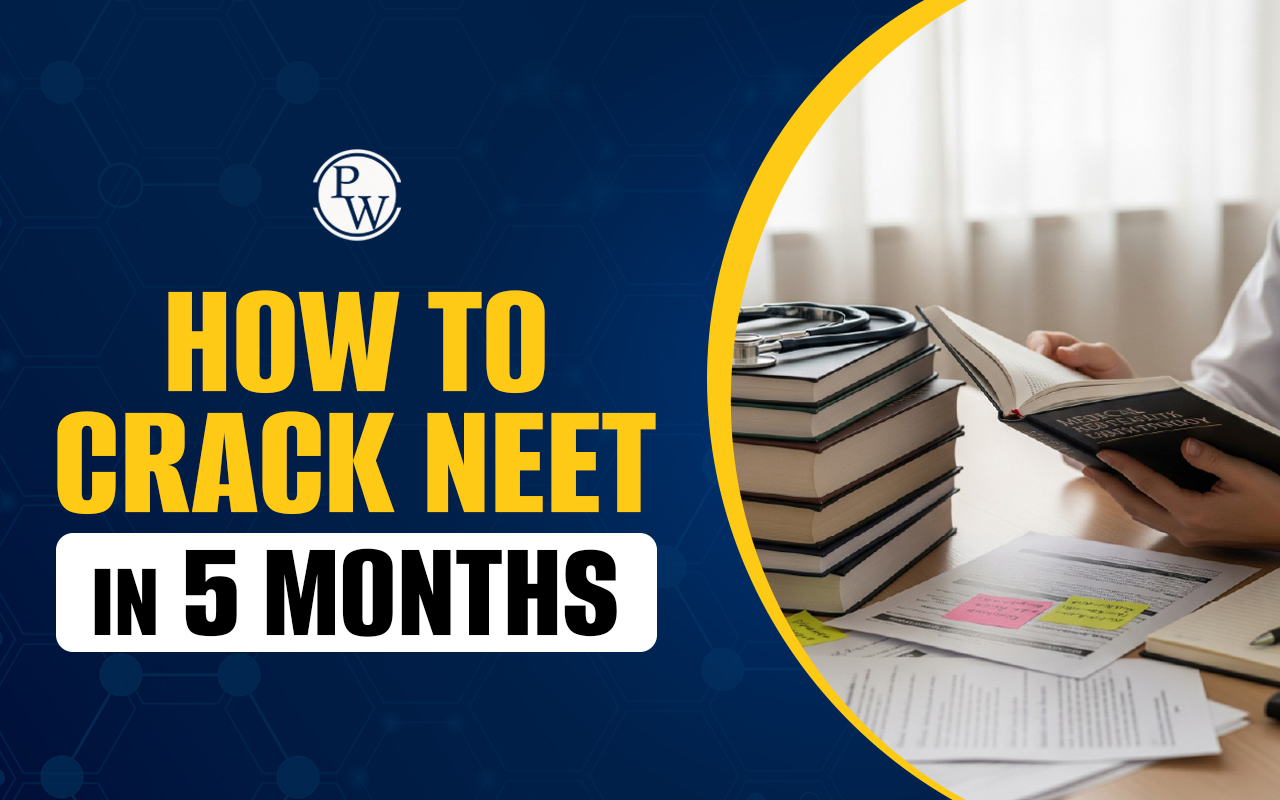
Gravitation MCQs: Gravitation is an important chapter in Class 11 Physics that forms the foundation for many advanced concepts in physics. Gravitation MCQs are designed to cover the fundamental principles of gravitational force, laws of motion under gravity, and related concepts. These questions are particularly valuable for NEET aspirants, as they provide practice on the type of questions and difficulty level that may appear in the exam.
By regularly practicing these MCQs, students can strengthen their grasp of gravitational concepts and improve their problem-solving skills, which are essential for achieving high scores in NEET. Candidates can practice Gravitation NEET MCQs below to enhance their preparation.Gravitation NEET Questions
Gravitation is a basic force that affects how celestial bodies move. For NEET exam preparation, it's important to understand this topic well. To help you learn and improve your problem-solving skills, we’ve provided a set of Gravitation MCQs with answers. Since gravitation is a key part of the NEET Physics syllabus, knowing it well is essential. Practicing these questions will help you get used to the problems you might asked in the exam and develop strategies to solve them.Also check:
NEET MCQs on Gravitation
NEET MCQs on Gravitation are carefully designed with a range of questions that cover both basic and advanced topics. It includes simple problems on calculating gravitational force as well as more challenging ones about orbital mechanics and gravitational potential energy. By practicing these questions, students can find out what they’re good at and where they need to improve, refine their problem-solving skills, and deepen their understanding of gravitation.Gravitation MCQs Class 11 For NEET
Experts specifically create gravitation MCQs for Class 11 NEET to align with the Class 11 NEET Physics syllabus . These Gravitation NEET questions are designed to help students build a solid understanding of gravitation, a fundamental concept in physics essential for advanced topics. Regular practice with these NEET MCQs on Gravitation ensures that students are thoroughly prepared for the NEET exam and can apply their knowledge effectively.| NEET Physics MCQs | |
|---|---|
| Units and Measurements MCQs | Motion in a plane MCQs |
| Mathematics Tools MCQs | Newton's laws of motion MCQs |
| Motion in a straight line MCQs | |
Class 11 Gravitation MCQs with Answers
To support students in their preparation, we provide Class 11 Gravitation MCQs with answers. Reviewing these answers helps students grasp the om any mistakes. This practice not only improves problem-solving skills but also boosts confidence in handling various types of Gravitation MCQs for Class 11 NEET.Q 1. The force of gravitation is;
- Repulsive
- Electrostatic
- Conservative
- Non-conservative
Ans. 3
Q 2. The gravitational force F, between two objects does not depend on;
- the sum of the masses
- product of the masses
- gravitational constant
- distance between the masses
Ans. 1
Q 3. The gravitational force with which the Earth attracts the moon:
- is less than the force with which the moon attracts the earth
- is equal to the force with which the moon attracts the earth
- is greater than the force with which the moon attracts the earth
- Either (1) or (3)
Ans. 2
Q 4. Two particles of the same mass are kept at some separation. If the mass of one particle is increased by 50% and the mass of another particle is decreased by 50%, the force between them at the same separation;
- Decreases by 25%
- Decreases by 75%
- Increases by 25%
- Does not change
Ans. 1
Q 5. If the distance between two masses is doubled the gravitational force between them;
- is doubled
- becomes four times
- is reduced to half
- is reduced to a quarter
Ans. 4
Q 6. Which of the following is true?
- The gravitational field due to a body extends till a finite distance
- The strength of gravitational field intensity increases when moving away from a body.
- The strength of gravitational field intensity decreases when moving away from a body.
- At infinite, the strength of gravitational field intensity is not zero.
Ans. 3
Q 7. Gravitational field intensity due to particle of mass “m” at 5 m is 40 N/kg. Then find its value at 10 m.
- 160 N/kg
- 220 N/kg
- 10 N/kg
- 80 N/kg
Ans. 3
Q 8. For net intensity to be zero at a neutral point due to two particles, field intensity due to both particles, will be:
- Opposite to each other
- Equal in magnitude
- Both (1) and (2)
- None of these
Ans. 3
Q 9. A point mass m is kept at each of the eight vertices of a cube, the gravitational field intensity is zero at
- Each face center
- Each edge center
- At body center
- Cannot be zero anywhere
Ans. 3
Q 10. A body of mass 60 g experiences a gravitational force of 3.0 N when placed at a particular point. The magnitude of the gravitational field intensity at that point is. (2022)
- 0.05 N/kg
- 50 N/kg
- 20 N/kg
- 180 N/kg
Ans. 2
Q 11. At what height from Earth's surface, acceleration due to gravity is decreased by 1%?
- 64 km
- 16 km
- 32 km
- 128 km
Ans. 3
Q 12. At what depth from the Earth's surface, is the acceleration due to gravity decreased by 1%?
- 128 km
- 32 km
- 64 km
- 16 km
Ans. 3
Q 13. A body weighs 72 N on the surface of the earth. What is the gravitational force on it, at a depth equal to half the radius of the earth?
- 48 N
- 36 N
- 30 N
- 24 N
Ans. 2
Q 14. A body weighs 200 N on the surface of the earth. How much will it weigh halfway down to the center of the earth? (2019)
- 100 N
- 150 N
- 200 N
- 250 N
Ans. 1
Q 15. If the Earth suddenly stops rotating about its own axis then the apparent weight of bodies will?;
- Increase at all the places.
- Decrease at all the places.
- Increase at all places except poles.
- None of these.
Ans. 3
Q 16. The infinite number of masses, each 1 kg, are placed along the x-axis at x = ± 1 m, ± 2 m, ± 4 m, ± 8 m, ± 16 m _____. The resultant gravitational potential in terms of gravitational constant G at the origin (x = 0) is;
- G/2
- –G
- 2G
- –4G
Ans. 4
Q 17. The escape velocity of a body from the earth depends on - (I) The mass of the body (ii) Mass of the earth (iii) The direction of Projection (iv) The height of the location from where the body is launched- (i) and (ii)
- (ii) and (iv)
- (i) and (iii)
- (iii) and (iv)
Ans. 2
Q 18. A missile is launched with a velocity less than the escape velocity. The sum of its kinetic and potential energy is;
- Positive
- Negative
- Zero
- May be positive or negative depending on its initial velocity
Ans. 2
Q 19. Satellites A and B are orbiting around the Earth in orbits of radii ratio 1: 4, find the ratio of their orbital velocities.
- 2: 1
- 3: 2
- 3: 1
- 4: 1
Ans. 1
Q 20. Statement I: The orbital velocity of a satellite is less than its escape velocity.
Statement II: The orbit of a satellite is within the gravitational field of the earth whereas escaping is beyond the gravitational field of the earth.
- Both Statement I and Statement II are correct.
- Both Statement I and Statement II are incorrect.
- Statement I is correct and Statement II is incorrect.
- Statement I is incorrect and Statement II is correct.
Ans. 1
Q 21. If the radius of the orbit of the satellite is increased, then K.E. and T.E. will be respectively.
- Decreases and increases
- Increases and decreases
- Both decreases
- Both increases
Ans. 1
Q 22. Assertion (A): A body becomes weightless at the center of the earth.
Reason (R): As the distance from the center of the earth decreases, acceleration due to gravity increases.
- Both Assertion (A) and Reason (R) are True and the Reason (R) is a correct explanation of the Assertion (A).
- Both Assertion (A) and Reason (R) are True but Reason (R) is not a correct explanation of the Assertion (A).
- Assertion (A) is True but the Reason (R) is False
- Assertion (A) is False but Reason (R) is True
Ans. 3
Q 23 Kepler's first law is known as
- The law of gravity
- The law of areas
- The law of periods
- The law of orbits
Ans. 4
Q 24. When a planet orbits the sun, one of the foci of the elliptical orbit is -
- The axis
- The perihelion
- The center
- The sun
Ans. 4
Q 25. The variation in the speed of the planet in its orbit around the sun can be explained on the basis of the conservation of -
- Angular kinetic energy
- Linear momentum
- Angular momentum
- None of these
Ans. 3
Q 26. In an elliptical orbit under gravitational force, in general.
- Tangential velocity is constant.
- Angular velocity is constant.
- Radial velocity is constant.
- Areal velocity is constant.
Ans. 4
Q 27. A planet is moving in an elliptical orbit around the sun. If T, V, E, and L stand respectively for their kinetic energy gravitational potential energy, total energy, and magnitude of angular momentum about the center of force, which of the following is correct?
- T is conserved.
- V is always positive
- E is always negative
- L is conserved but the direction of vector L changes continuously.
Ans. 3
How to Approach Gravitation MCQs?
To maximize the benefit of your Gravitation MCQs practice, follow these steps:- Understand the Concepts : Ensure a clear grasp of the basic principles of gravitation as outlined in the NEET Physics syllabus.
- Practice Regularly : Solve NEET MCQs on Gravitation frequently to become familiar with the types of questions and build confidence.
- Review Solutions : Study the explanations for Class 11 Gravitation MCQs to understand the correct answers and refine your problem-solving approach.
- Identify Weak Areas : Focus on and practice topics where you find difficulties in improving your understanding.
- Manage Your Time : Practice answering questions within a time limit to enhance your efficiency during the NEET exam.
Gravitation MCQs FAQs
Q. Why are Gravitation MCQs important for NEET?
Q. How do these Gravitation MCQs fit into the NEET Physics syllabus?
Q. What topics do NEET Gravitation MCQs cover?
Q. How do Class 11 MCQs with answers help in preparation?
Q. What are effective strategies for practicing Gravitation MCQs?










